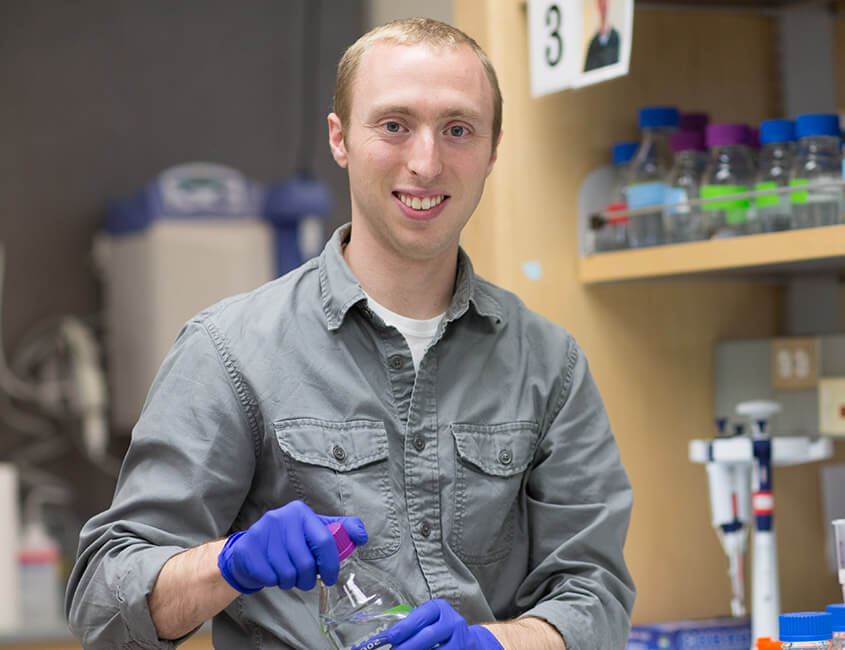At Taylor, I did research under Dr. Daniel King on the use of liquid-chromatography mass spectrometry to identify myosin isoforms in muscle tissue. After graduating I spent a year working as an analytical chemist at Cook Pharmica in Bloomington. I had always known that I wanted to continue my education, but I also wanted to take a year off and make sure I wanted to transition into industry after completing a more advanced degree.
I chose UW-Madison because of the broad expertise in mass spectrometry across the campus. I liked the environment in the Coon lab, and liked how the group works on all aspects of mass spectrometry—instrumentation, methods, applications, data analysis. Since my undergrad research I had been fascinated by the application of mass spectrometry to biological problems, and I knew I wanted to pursue that in grad school.
I’m working on developing mass spectrometry tools for lipidomics. Mass spectrometry has only recently been used to analyze lipids, so it’s a new, developing field. We are using MS techniques to investigate the lipidomic profile in many systems including yeast, mice, and human plasma. Currently, we are collaborating with the School of Medicine and Public Health and coordinating with the Wisconsin Registry for Alzheimer’s Prevention to try to identify key biomarkers in the onset of Alzheimer’s. I’m also part of a collaboration with Alan Attie’s lab that will be doing a large lipidomic analysis of mice livers to try and understand the genetic foundation of type-2 diabetes.

